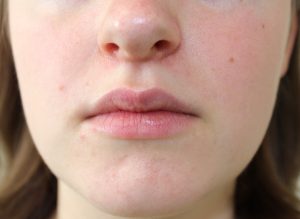 Vitamin D and calcium are responsible for our strong bones and teeth. They are both extremely important in child bone and muscle development. However, as we age, vitamin D and calcium continue to play a huge role in our body’s processes. If you think you may not be getting enough vitamin D and calcium from sunlight or from your diet, consider taking a daily vitamin D and/or calcium supplement.
Vitamin D and calcium are responsible for our strong bones and teeth. They are both extremely important in child bone and muscle development. However, as we age, vitamin D and calcium continue to play a huge role in our body’s processes. If you think you may not be getting enough vitamin D and calcium from sunlight or from your diet, consider taking a daily vitamin D and/or calcium supplement.
Vitamin D
Vitamin D helps us to absorb and retain calcium and phosphorus, important ions used in bone-building. This vitamin helps our body maintain its normal processes and even affects the way that we feel. It may even help to lessen symptoms associated with depression for some individuals.
Many of us sun-worshippers would rather be soaking in vitamin D sunrays than working indoors day after day. Our kids might get some sun during playtimes, but it’s never enough time to obtain what they need. Studies show that we need to be in the sun for at least 15 minutes a day in order to simply make vitamin D. As it turns out, our needs often surpass what we can safely get from soaking in the sun.
Vitamin D is commonly found in milk, cereal, orange juice, fatty fish, and yogurt.
Vitamin D is fat-soluble. Fat-soluble vitamins, like A, D, E, and K, are stored in fatty tissues and in the liver. They are used as your body needs them and otherwise remain stored. Large quantities of fat-soluble vitamins tend to be more toxic because your body stores them, rather than pees them out. For more information on water-soluble vitamins, fat-soluble vitamins, or minerals, visit our Vitamins and Deficiencies blog.
According to the American Academy of Pediatrics (AAP), infants under a year require 400 IU (International Units) per day of vitamin D and older children and adolescents require 600 IU per day. Furthermore, the AAP recommends that breastfed babies consume a vitamin D supplement of 400 IU per day. The requirements are the same for formula-fed babies, however, infants receiving 32 ounces or more of formula typically get enough vitamin D in their bottle. Liquid supplements are available for infants who can’t chew or swallow a supplement. The maximum safe upper limit is 100 ng/mL. Research also shows that if breastfeeding mothers take 10oo IU’s a day of vitamin D supplement, the baby will receive an adequate amount in the breast milk.
Vitamin D Deficiency
We, as a society, avoid skin damage by sticking to shade or slathering our bodies with sunscreen. Also, many of us have also begun to eschew dairy products for a variety of reasons. However, these health trends have resulted in a society-wide vitamin D deficiency.
A deficiency in vitamin D can weaken bones, leading to an increased risk o bone fractures, and even rickets in younger kids. Rickets is a bone-softening disease that affects kids aged two and under. Additionally, people taking certain medications, people with darker pigmented skin, and some with certain chronic diseases, like cystic fibrosis, are at a higher risk of being vitamin D deficient.
Symptoms of Vitamin D Deficiency
- Depression
- Excessive Sweating
- Weakness
- Chronic pain
- Bone pain
- Brittle bones (easily broken bones)
- Respiratory illness
- Psoriasis
- Infertility
Vitamin D Toxicity
You may have read that large doses of vitamin D can contribute to stronger bones, however, too much vitamin D can be toxic. Vitamin D toxicity does not usually occur from diet or sun exposure. Most people who have vitamin D toxicity took too large a dose of their vitamin D supplement. Symptoms of vitamin D toxicity include weakness, poor appetite, nausea, vomiting, frequent urination, and kidney problems. However, vitamin D toxicity is uncommon. You would have to take an extremely high dose every day for months to reach this point.
Calcium
 Calcium is a mineral that’s necessary for healthy bone development. It is particularly important for developing children. Adequate calcium intake in youth contributes to the development of strong, healthy bones for later life. Also, calcium regulates the heart, contributes towards muscle function and nerve signaling, and regulates cholesterol and blood pressure. It is found in milk, cheese, yogurt, sardines, and some vegetables like kale, spinach, and broccoli.
Calcium is a mineral that’s necessary for healthy bone development. It is particularly important for developing children. Adequate calcium intake in youth contributes to the development of strong, healthy bones for later life. Also, calcium regulates the heart, contributes towards muscle function and nerve signaling, and regulates cholesterol and blood pressure. It is found in milk, cheese, yogurt, sardines, and some vegetables like kale, spinach, and broccoli.
Calcium is important, but so are the nutrients that get calcium where it needs to be. Vitamin D3, vitamin K2, magnesium, and boron are all vital to the transport of calcium. Make sure you’re getting enough of these in your diet or supplement load too.
Firstly, calcium is a mineral. Minerals, such as iron, magnesium, zinc, and iodine, are not necessarily water- or fat-soluble. However, all minerals are toxic at very high levels. Typically, mineral toxicity occurs when a child or adult has consumed too much of a supplement. For more information on water-soluble vitamins, fat-soluble vitamins, or minerals, visit our Vitamins and Deficiencies blog.
Calcium Deficiency
Calcium deficiency (hypocalcemia) is similar to a vitamin D deficiency. It’s important to get enough calcium in childhood. Children who do not receive enough calcium do not grow to their full height, develop weak bones, and are at risk for osteoporosis later in life. However, calcium deficiency is more common as we age. Due to hormonal changes, women tend to be more deficient in calcium than men. Certain medications may alter calcium absorption, so talk to your healthcare practitioner if you think you may have some symptoms of calcium deficiency.
Symptoms of Calcium Deficiency
- Weakness/fatigue
- Chronic pain
- Bone pain
- Brittle bones (easily broken bones)
- Osteoporosis
- Growth and developmental delays
- Cardiovascular problems
- Blood clotting problems
Calcium Toxicity
Also, calcium toxicity tends to be similar to vitamin D toxicity. Symptoms of calcium toxicity include abdominal pain, confusion, depression, weakness, poor appetite, nausea, vomiting, frequent urination, and kidney problems. However, calcium is commonly in antacids and supplements. Calcium toxicity is also common in those with hyperparathyroidism, some cancers, sarcoidosis, and tuberculosis. Most importantly, in very large amounts, calcium can be poisonous. If you suspect you’re suffering a calcium overdose, call the Poison Help Hotline (1-800-222-1222).
For those interested in the minimum RDA (Recommended Dietary Allowances) for vitamin D and calcium, refer to this National Academies chart.
Finally, if you are unsure about your vitamin D or calcium levels, a lab test can identify if you or your child are deficient. If you choose to provide nutrients in the form of supplements, it is still important to maintain good health in other ways. As always, keep all supplements out of reach of children. Visit the Growing Healthy Together Fullscript page for a look at the vitamin and mineral supplements that we prefer.
For a more in-depth look at deficiency and toxicity, check back in on our upcoming blog series, including the following:
- Vitamin A
- B Vitamins
- Vitamin C
- Calcium and Vitamin D
- Vitamin E
- Iodine
- Iron
- Vitamin K
- Magnesium
- Omega-3 Fatty Acids
- Zinc
For questions or concerns, respond to this blog or contact us.





